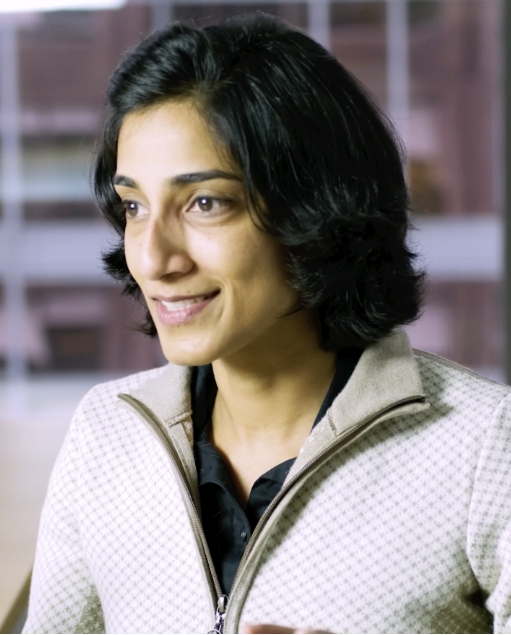Have you ever wondered what happens inside someone’s brain when they’re learning how to play a musical instrument[1] or how to ride a bike?
One of the brain’s most fundamental and amazing functions is the ability to adapt to and learn from new experiences, environments and stimuli through a process called brain plasticity.[2]
Brain plasticity occurs at the level of synapses, which are the points of communication between neurons—a specialized type of cell that is the basic building block of our nervous system. Changes in synapses lead to changes in how corresponding neural circuits function in the brain, and in turn, lead to changes in our behaviour. However, there is still much that researchers don’t understand about how the brain encodes these new circuits for these new behaviours to persist and become part of our brain’s normal operation.
HBHL-funded researcher Aparna Suvrathan—Assistant Professor in the Department of Neurology & Neurosurgery at McGill—is working with her team to bridge this gap in our understanding by investigating the underlying principles of neuronal plasticity during learning.
Cerebellar synapses and learned behaviors
Suvrathan’s research team is particularly interested in how plasticity in synapses in the cerebellum (the brain region responsible for motor learning as well as for some cognitive tasks) can result in specific learned behaviors. The cerebellum makes an ideal system for studying this process due to its relatively well-mapped and simple structure compared to other parts of the brain.
 Suvrathan’s lab—located at the Montreal General Hospital and part of McGill’s Centre for Research in Neuroscience–is carrying out this study of the synaptic and cellular mechanisms underlying the plasticity in the cerebellum by using techniques ranging from patch clamp electrophysiology, imaging, and molecular genetic tools to classic wet lab techniques.
Suvrathan’s lab—located at the Montreal General Hospital and part of McGill’s Centre for Research in Neuroscience–is carrying out this study of the synaptic and cellular mechanisms underlying the plasticity in the cerebellum by using techniques ranging from patch clamp electrophysiology, imaging, and molecular genetic tools to classic wet lab techniques.
Specifically, her lab studies plasticity both in the normal mouse brain and in the brains of mice that are a model system for Fragile X syndrome[2], which is a widespread genetic cause of autism spectrum disorder and intellectual disability. “Many years of work across many labs have found that a form of synaptic plasticity, a long-lasting change that causes a weakening of synapses, is actually enhanced in Fragile X syndrome model mice,” explains Suvrathan. “The study of Fragile X syndrome and other autism spectrum disorders places a significant emphasis on plasticity due to the observed dysfunction in synapses, which is a key physiological phenotype .” Synapses are in fact structurally different in this syndrome, which is why Suvrathan and her team are trying to gain a deeper understanding of these synaptic disruptions and their consequences for cellular function and for cerebellar output, and ultimately for both motor and non-motor behavior.
Overall, the research conducted by Suvrathan’s lab is critical to understanding the underlying mechanisms of learning and memory in the brain. “We have the tools, we have the expertise, we have the trained talent and hopefully the right questions to move forward,” said Suvrathan.
By unraveling the complexities of synaptic plasticity in the cerebellum, her team hopes to shed light on how the brain encodes new memories and adapts to new experiences.
[1] Olszewska AM, Gaca M, Herman AM, Jednoróg K and Marchewka A (2021) How Musical Training Shapes the Adult Brain: Predispositions and Neuroplasticity. Front. Neurosci. 15:630829. doi: 10.3389/fnins.2021.630829
[2] Suvrathan A, Hoeffer CA, Wong H, Klann E, Chattarji S. Characterization and reversal of synaptic defects in the amygdala in a mouse model of fragile X syndrome. Proc Natl Acad Sci U S A. 2010 Jun 22;107(25):11591-6. doi: 10.1073/pnas.1002262107. Epub 2010 Jun 7. PMID: 20534533; PMCID: PMC2895119.


